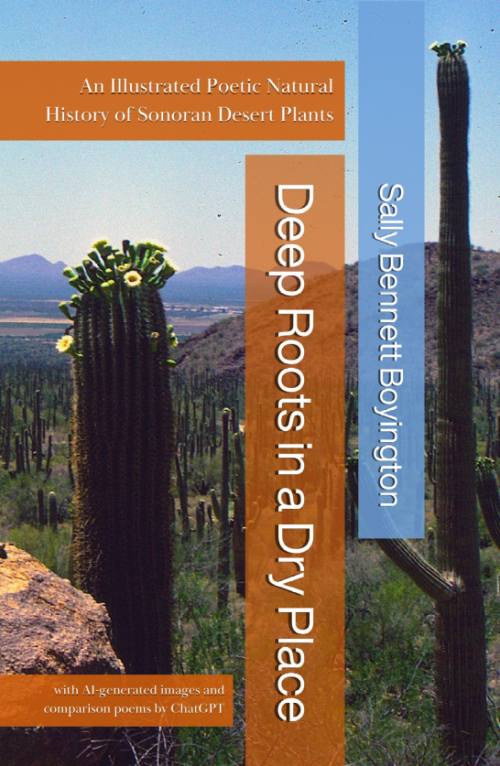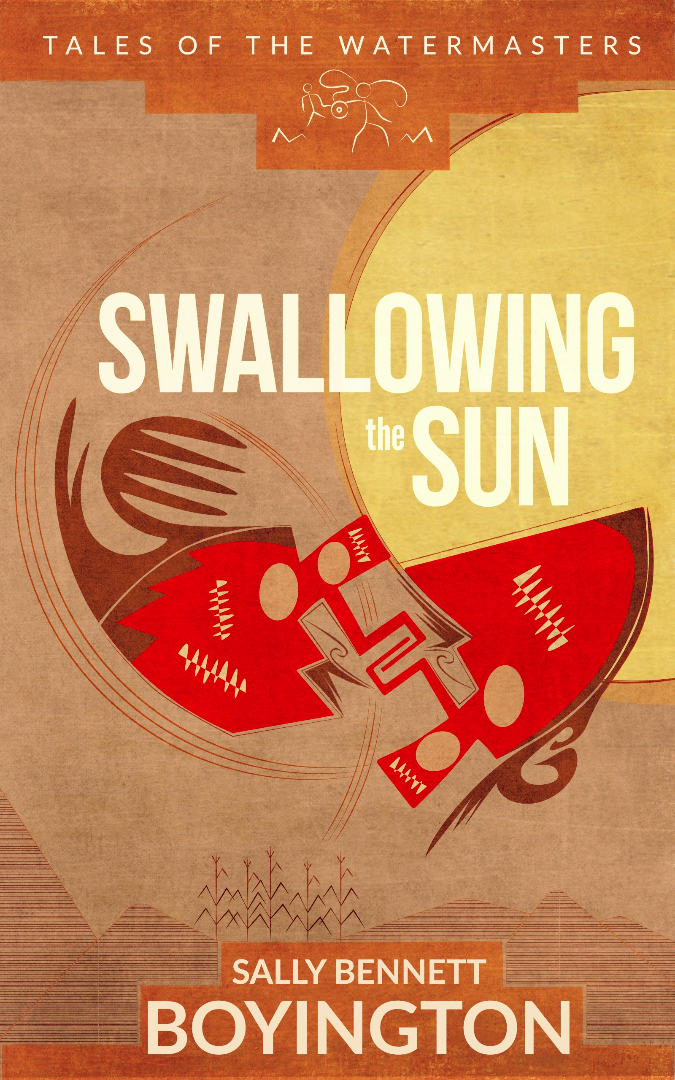publisher of fiction and poetry by
Sally Bennett Boyington

Available by order from your local bookseller or from Amazon.
New Release!
Curious about AI? So was I, when ChatGPT was released for public use. My newest book project, Deep Roots in a Dry Place, grew out of a year-long exploration of ChatGPT and image-generating AIs. In these pages you can directly compare my photographs and poetry about plants of the Sonoran Desert with art and poems generated by AIs.
Published more than a decade ago, Homegrown Muse has been crying out for attention.
A novel about two people trying to escape the expectations placed on them by society, their families, and themselves.
Tales of the Watermasters,
volumes 1 and 2

Deception, betrayal, and murder ravage a peaceful people facing a terrifying future as their canals begin to fail.

A Watermaster called home from exile to restore the canals must find a way to survive in a community divided by religious conflict.
Look for BITTER WIND, the third volume in the Watermasters series,
coming soon

Vengeance for an unforgivable act of violence changes the People of Two Rivers forever.
A series of novels set in indigenous Arizona
Explore the world of the Hohokam, who farmed the Arizona desert for a thousand years, building vast networks of canals, multistory buildings, and platform mounds as big as football fields . . . and then disappeared.
What happened to this magnificent civilization? Walk with the Watermasters and find out.
Praise for the series:
Rainbow Knife: “The strength of this novel lies in its expert, detailed worldbuilding that shows thorough research and is conveyed in artful language. . . . Readers will feel fully immersed in this . . . engrossing tale.” — Kirkus Reviews
Swallowing the Sun: “Richly imagined narrative spins a spellbinding tale of ecological disaster, a false messiah and an existential human crisis.” — Court Atchinson, author and historian
“Such vivid writing! Transported me to perilous, dry, prehistoric Arizona.”— Kaye George, author of Death in the Time of Ice
“I am SO enjoying the read: the characters, the setting and the world you have conjured!” — Barbara T
I write about ancient people to show that they were not so different from ourselves: dreamers and engineers, artists and farmers, politicians and demagogues and fanatics, riddled with jealousy and ambition and buoyed by love and optimism.
